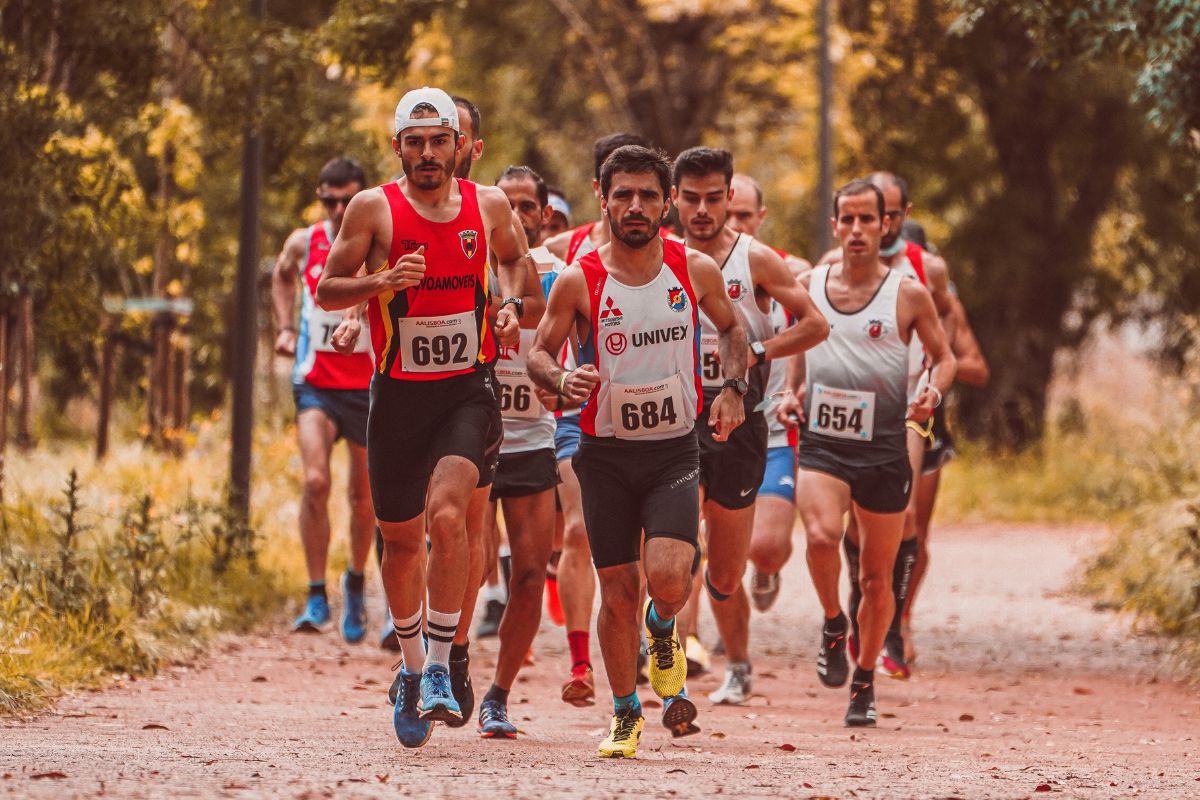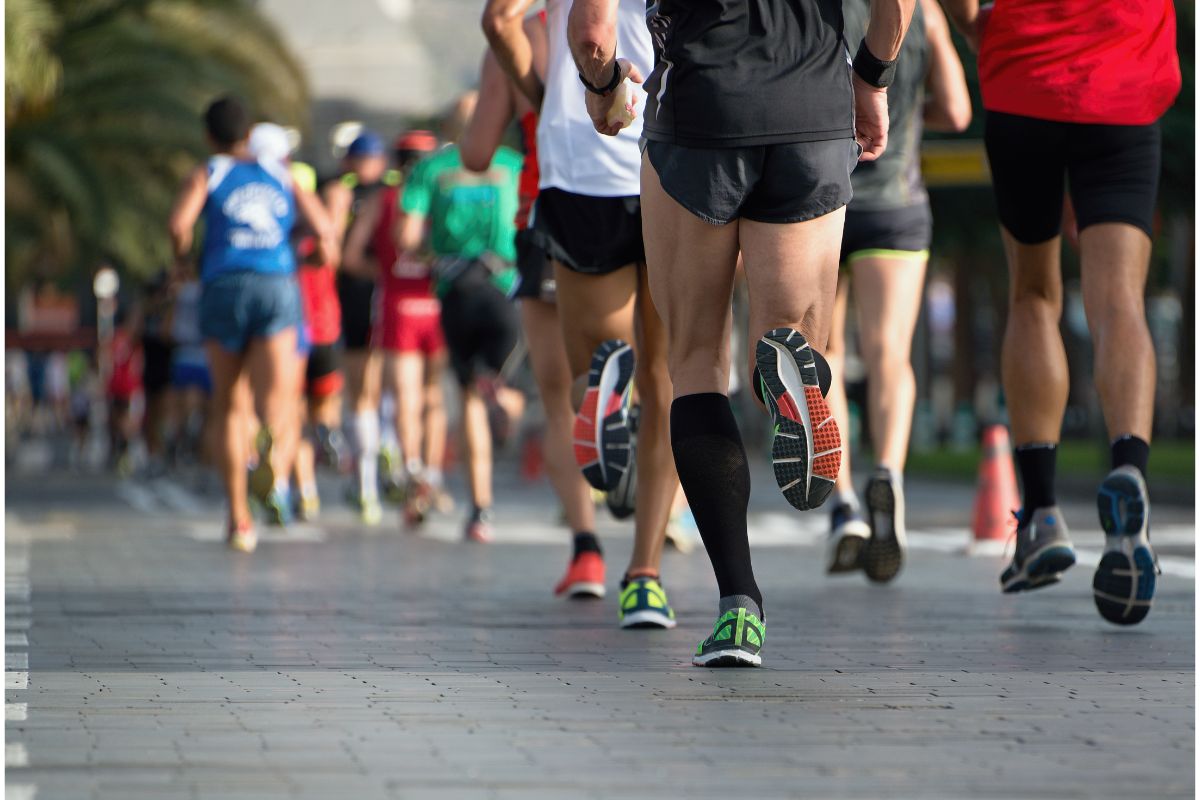Everybody’s seen a marathon at some point on TV. Even if you don’t sit through the whole thing and watch for numerous hours, tuning in and taking a look at who’s winning can be pretty interesting.
At some point or another, we’ve probably also wondered how such a large-scale operation as a marathon live stream or TV broadcast happens.

After all, it can’t be easy to get a team of cameras to follow the runners around a 26-mile circuit for hours, right?
Well, in this article, we’re going to be taking a closer look at everything that goes into a marathon broadcast, whether it’s streamed live online or broadcast on TV.
Setting Up
The process of live streaming a marathon begins a few hours, or even days before the marathon even starts. It takes a lot of preparation and organization to set everything up, especially when it’s a large-scale event.
The production manager will often start by looking at a map of the marathon circuit.
Because marathons often take place in cities and towns, they’re often very well mapped out and the production manager can make a detailed plan of where they want to place each camera.
The reason for mapping it out so carefully is so that the production manager can place each camera operator at certain key locations throughout the circuit.
Naturally, the start and finish will take priority but it’s also important to have static cameras throughout the circuit.
Aside from static cameras, the production team also needs to think about mobile cameras. The entire marathon circuit can’t be covered by static cameras alone; this would be a lot more expensive than it’s worth.
A series of mobile cameras will be coordinated to cover different parts of the track throughout the race, also.
Some of the mobile cameras that will follow the runners include drones, helicopter cameras, and cameras in moving vehicles like cars and trucks.
These also need to be carefully coordinated by the production team to make sure they are all covering every part of the marathon course.
Day Of The Marathon
Once all of the setup and planning has been done (often the day before the marathon itself), the next stage of the broadcasting process takes place on the big day.
In the morning, the production team, including all camera operators, will go over the plan for the day and make sure everybody knows what they’re doing.
Then, once everyone takes their positions around the course, they will often communicate using an earpiece.
Using walkie-talkies is common in production teams for live broadcasts but this could interfere with sound being picked up from microphones on each camera.
In fact, because the scale of a marathon broadcast production is so large, audio will often be recorded alongside video with a joint camera and microphone setup.
The production manager won’t be with any of the camera operators at this point. Instead, they’ll sit in a headquarters with access to all of the footage. This is where the real skill of organization and coordination comes into play.
They need to decide which camera shots will be played on the live broadcast, as well as coordinate with camera operators to specify what kinds of shots they might need at upcoming points in the race.

The graphics that you see on screen while the marathon is taking place are usually left to one specific member of the production crew, separate from the manager.
There may be a few different people working on creating the correct graphics but one person will coordinate which ones are shown on screen and at what point.
All in all, it takes a massive amount of effort and planning across the entire production team to pull off a broadcast or live stream for a marathon race.
Live Stream VS TV Broadcast
The two main ways that marathon races are shown live to the public are through a TV broadcast or an online live stream. Regardless of which medium the marathon is broadcast through, the production process that we just outlined will still be pretty much the same.
Of course, if the marathon is fairly small, the budget for production might also be smaller, meaning that there will usually be fewer static cameras and the production team will need to rely on mobile cameras to cover the whole of the track.
Marathons that are broadcast on TV will often take place on dedicated sports channels but internet live streams will happen on dedicated websites and you might have to search hard to find the more niche races from around the world.
How To Live Stream Your Own Marathon
A popular trend with marathon runners is to produce their very own live stream while running a race.
When it comes to the regular marathoners, their mind isn’t taken up too much by the effort required for running the marathon and they can focus on bringing making video live stream content for their followers on the internet.
The most common way to do this uses a GoPro or action-style camera that can be strapped to their chest. This way, the live stream broadcast will show a realistic view from the perspective of the runner.
Alternatively, using a selfie stick gives the runner a chance to speak directly to their live stream viewers while facing them. Also, it means that they can maneuver their camera to show off some of the interesting scenery around them.
There are plenty of popular streaming sites that you can use with just a mobile device, with the most popular by far being Twitch.
If you’re thinking about producing your own live stream marathon broadcast, Twitch is definitely one of the best platforms to start with.
Final Thoughts
As you can tell by now, there’s a lot more that goes into a marathon live stream broadcast than most people think.
Unlike a regular TV broadcast, the subjects (the runners) are constantly moving and a large-scale area has to be covered by the team.
Bear that in mind next time you’re watching a live-streamed marathon!
- Can Dogs Run Faster Than Humans? (Running With Your Furry Friend) - October 4, 2022
- 10 Doggie Fun Runs You Will Love [Ultimate Guide] - October 4, 2022
- What Are Division Results In Running? - October 4, 2022








